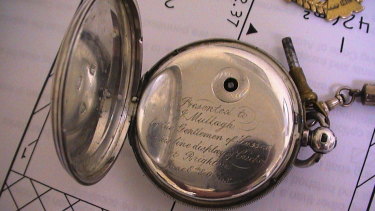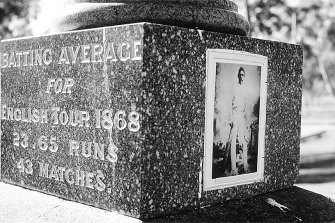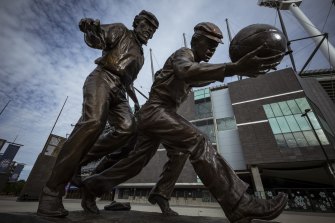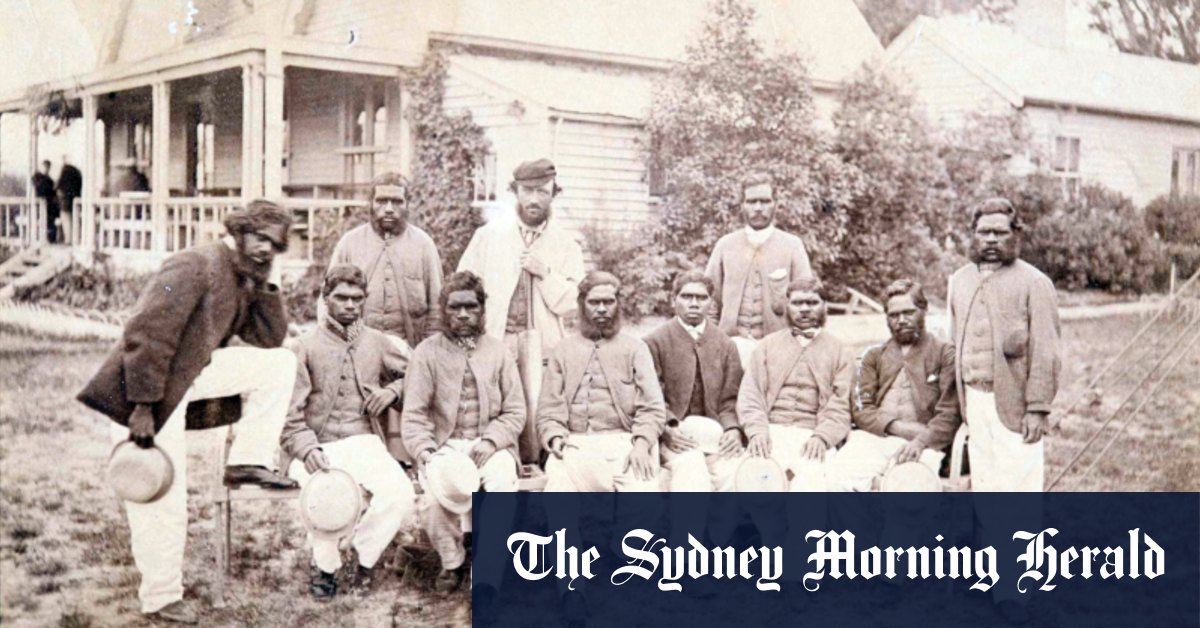Now, Mr Editor, this is a gross perversion of the truth. In the first place, Mr Wills neither intimated by message or letter that he required accommodation for the night. The place he should have stayed at was Streatham, such an arrangement being found necessary by the proprietors of the coaches for the convenience of their cattle; but it appears no arrangement for accommodation was made by Mr Wills with the landlord of the Streatham hotel, and though Mr Redfern had sleeping accommodation for the party, Mr Wills pressed on to Skipton, the good accommodation which was tendered being declined.
On arriving at Skipton, shortly after midnight, in a somewhat rowdy state, the Ripon hotel was opened for the party, and brandy was immediately demanded by them. I could offer them no beds, my house being full, and informed Mr Wills had he intimated to me by message or letter he would require accommodation for himself and party I should have been prepared for them. Brandy was again loudly demanded, but I declined furnishing them with more than one bottle; had I done so, in all probability there would have been something more broken in addition to the windows. As I would not serve them with more brandy, and refused their going upstairs to disturb my lodgers, they ultimately proceeded to Linton.
Trusting you will favour me with a small space in your columns to correct a wilful misrepresentation, I am, &c., JAMES TUCKER.
Ripon hotel, Skipton, 24 December
[The paragraph in question shows that our information was derived from Mr Wills himself] – ED. Star.
What this contemporaneous account and editor’s note tell us is revealing. First, it confirms that the hard-drinking Wills had a social but also somewhat fraught relationship with the Aboriginal players he mentored. Secondly, it adds weight to contentions made at the time that the drinking culture of the team contributed to the ill-health and deaths of several of the players, both before and after Boxing Day.
Thirdly, it underlines why, after an abortive tour of New South Wales following the MCG match, Wills ceased to be captain/coach of the team, with duties passing to the English professional Charles Lawrence, who would take them to England in 1868. Lastly, it reinforces the unreliability of Wills as the narrator of his own story, much of which has long since passed into Australian sporting legend.
For Fearon, who hopes to collate much of his digitally-based research with Wills’ most recent biographer Greg DeMoore, The Ballarat Star letter is strong evidence that more research, and more discussion, should be had about the Aboriginal teams of 1866-67 and 1868.
At the same time, it adds another layer to the Wills story, which became contentious once more with his parallel discovery of the Chicago Tribune article from 1895, first reported by the ABC. The article purported to link Wills to reprisals for the Cullin-la-ringo massacre in Queensland in 1861, during which his father Horatio was killed.
Tom Wills.
“It is clear that, in Queensland, Wills’ increased his alcohol intake to manage what is now recognised as post-traumatic stress disorder,†Fearon says. “In later years he was said to drink with anyone. The publican’s letter provides evidence that he also drank with the Aboriginal cricketers, confirming what historians already suspected.
“In terms of tracking down sources, what would have taken weeks or months before digital archives can now be achieved in half an hour. Now anyone can sit up in bed, type in a keyword on their laptop and alter perceptions of history. That’s pretty cool.â€
Trove, of course, is by no means definitive, with many newspapers and periodicals yet to be similarly captured. The campaign earlier this year for additional funding to digitise vast swathes of material in the National Archives – before it disintegrates – illustrates how a mix of digital and traditional sources must always be tapped.
Some years before Fearon’s work, another researcher had pushed a view of Wills’ time with the Aboriginal team that challenged much of what had been understood to that point. John McPherson, a descendant of the Wills family, wrote in his 2005 thesis:
“His much-vaunted relationship with the Aboriginal cricket team in 1866-67 was an unmitigated disaster, part of which has been attributed to Wills’ heavy drinking. Four of the Aboriginal cricketers died during the brief time they were under Wills’ coaching. One member of the team, Watty, a replacement for the deceased Sugar, reportedly died as a result of alcoholic poisoning within the final 25 kilometres of the team’s coach trip from Sydney to Edenhope in the Western districts of Victoria. That Wills’ relationship with Australian Aboriginals is considered one that can be classified by the term ‘goodwill’ is symptomatic of the silences that have accompanied innumerable massacres of Aboriginals in Australia.â€
Strong words, challenged by many. Whether that be The Age’s own Martin Flanagan, author of the Tom Wills novel The Call, DeMoore, or many others involved in football and cricket circles who have revered Wills over many years. Asked whether commemorations of the journey from western Victoria to the MCG, and subsequently to England, should be re-appraised, McPherson argues that what is needed is more focus on the Aboriginal cricketers themselves.

A watch presented to Unaarrimin, also known as Johnny Mullagh, by Sussex players in honour of his play on the 1868 tour of England.
“It’s worth honouring because of the players who were involved,†he says. “Tom Wills’ activities, one way or the other, were what they were, but you had people like Johnny Mullagh who really do need more acknowledgement in terms of being highly skilled players who were taking up an amazing venture. Those guys were under amazing difficulties, and they blazed a trail.â€
This, in particular, is where more research is required. Fearon and McPherson agree that a joint project, taking in expertise in sport, 19th-century Australia and especially Aboriginal cultural input, would do much to improve our understanding of the period and the crossover between cricket, football and Indigenous Australians.
Cricket Australia, which has worked assiduously over recent years to provide more recognition for the Aboriginal team of 1866-68, is seeking more information and advice about the matter. The MCC is also reaching out to experts.
The club has, in recent years, launched a publishing support program for projects delving into its history. As a former MCC secretary and captain, Wills would fit the bill. So would Mullagh, who played for the club in 1869-70 and was recently inducted into the Australian Cricket hall of fame chaired by MCC committee member Peter King. The role of Lawrence also merits fresh appraisal.
“I think it’s something where we should see more researchers dedicate time to this,†McPherson says. “We need to have multiple eyes from different backgrounds looking into it and not just people from a white cultural heritage.

The grave of Unaarrimin, also known as Johnny Mullagh, in the Wimmera village of Harrow, Victoria.
“If I was to research it further, I’d want to do it in terms of working with Indigenous Australians, to research this area. We need to understand the impacts of generational trauma. That is a very potent factor to take into account.â€
As Eleanor Bourke, the chair of Victoria’s Yoo-rrook Justice Commission and a distinguished Wergaia/Wamba Wamba Elder, stated recently: “The story of Tom Wills illustrates exactly why Yoo-rrook was established and further validates Yoo-rrook’s mandate for a formal truth-telling process.â€
In the meantime, thousands will walk past the MCG statue of Wills umpiring one of the first games of Australian Rules football, between Melbourne Grammar and Scotch College in 1858. The inscription below, carved in stone, is the version of his story seen by more people than any other:
Tom Wills, a son of pastoral Australia and educated at Rugby School, England, did more than any other person – as a footballer and umpire, co-writer of the rules and promoter of the game – to develop Australian Rules football during its first decade. His enthusiasm and coaching resulted in the first Australian cricket team tour of England, the Aboriginal team of 1868.
Something worth noting about the statue itself is that it is the only one outside the MCG that was funded separately, by Melbourne Grammar and Scotch College. All the other graven images dotted around the ground were bankrolled by the Tattersalls Club and Australia Post, and subject to the decisions of a panel of judges for significant figures.

The statue outside the MCG of Wills (left) umpiring the 1858 game between Melbourne Grammar and Scotch College.Credit:Chris Hopkins
No one, it should be made clear, is looking to take down the statue. But some tweaks to the above inscription may well be in order.
“There may be, as in the United States when they were looking at Black Lives Matter and the various different statues there, a solution where an additional brass plaque is added as part of a truth-telling process,†McPherson says. “We don’t want to deny the positive things Tom Wills did, but we also need to acknowledge that it’s highly likely he was involved in other severe and significant events.â€
Adds Fearon: “I’m not sure this is a time for erecting statues, but a time for further research and a broader discussion, which I hope to take part in. Either way, the Aboriginal team certainly deserves greater recognition.â€

